This week, we follow an American art legend to the beloved city of London.
Before pop art, there was Robert Rauschenberg. Although the iconic artist provided the catalyst for the birth of one of the most famous art currents of the 20th century, seeing his work as a mere precursor to Warhol would be a mistake. Rauschenberg completely changed the world of art, both in the US and the rest of the world. He continuously challenged and pushed the limits, experimenting, creating and displaying an inspiring range. Painting, sculpting, photography, or performance art – Rauschenberg wasn’t pinned down by a single medium or even by the admittedly flexible confines of 2D art.
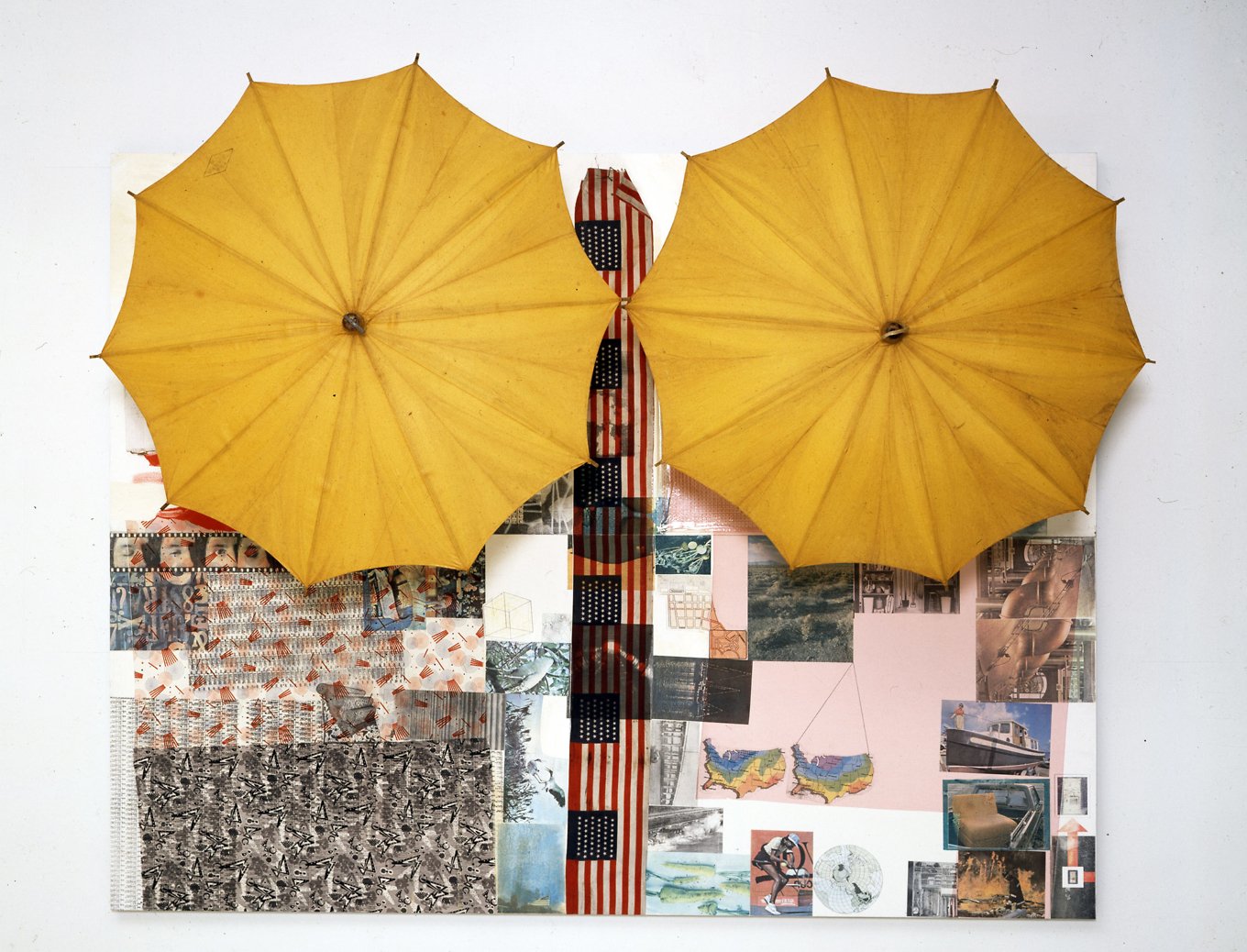
Untitled (Spread) 1983 – Solvent transfer and acrylic on wood panel, with umbrellas 188.6 x 245.7 x 88.9 cm © Robert Rauschenberg Foundation, New York.
His genius lies beyond his creations – he reimagined what art was and could be at a time when the American art scene was going through captivating times that moved away from abstract expressionism and into the realm of the experimental. His iconic combines, the mesmerizing collages with found objects and different painting techniques or mixed-media, were created in the ‘50s. He was the first American artist to win the Grand Prize at the Venice Biennale, in 1964. He used taxidermied animals in the Canyon and Monogram artworks many decades before a certain shark made waves in the art world in 1991. Intrigued by the link between art and dance, he designed everything from sets to clothing and lighting for various shows. In 1966, he co-founded the Experiments in Art and Technology organization which linked artists and engineers. Undoubtedly, Rauschenberg was a true Renaissance man.
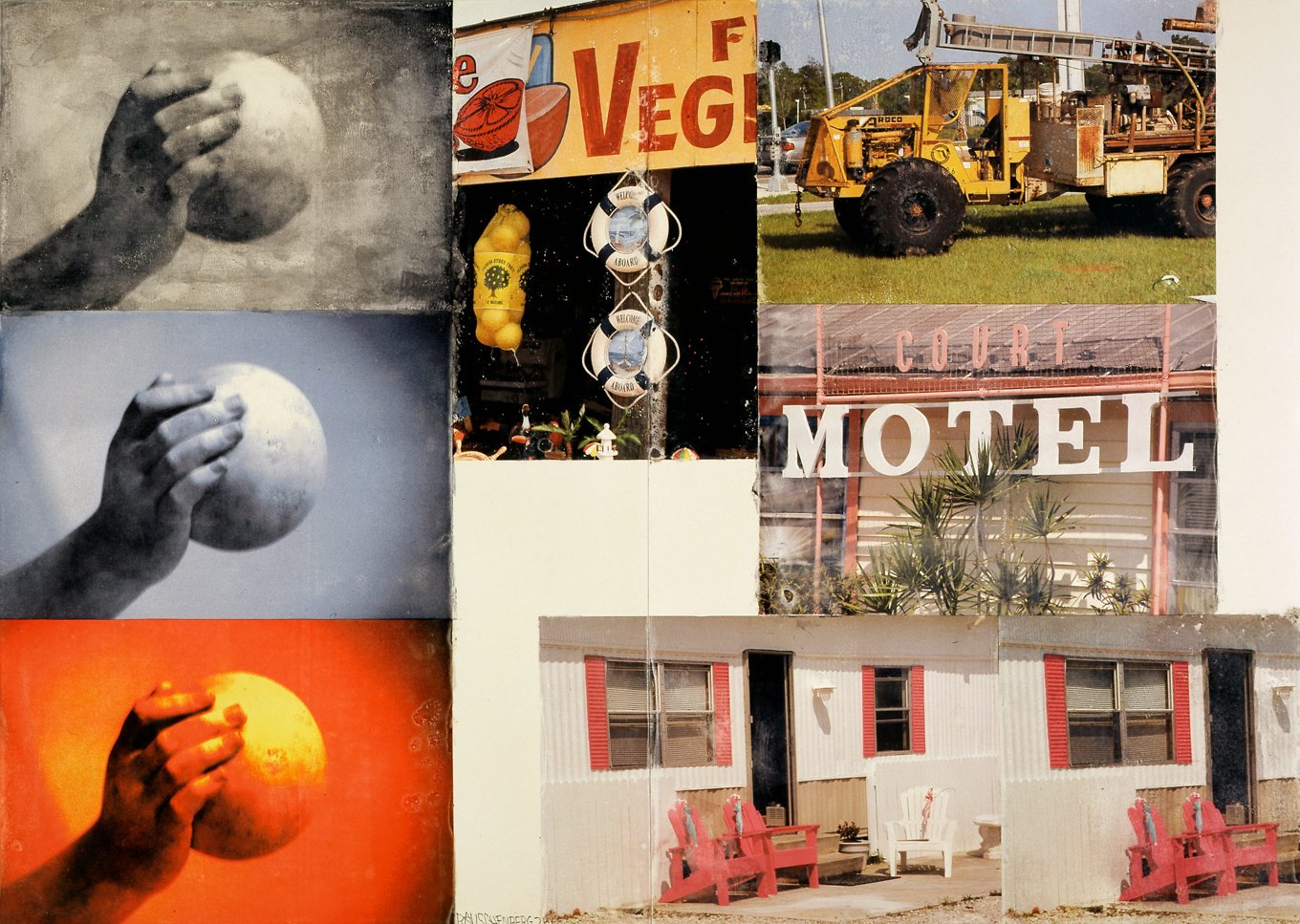
Triathlon (Scenario) 2005 – Inkjet dye transfer on polylaminate, 217.2 x 306.1 cm – © Robert Rauschenberg Foundation, New York
This ambitious and impressively comprehensive exhibition is the result of a collaboration between Tate Modern and New York’s Museum of Modern Art. As a complete retrospective of Rauschenberg’s work, it features artworks spanning over a period of 60 years. His arguably most famous work, the Monogram combine that includes a tire placed on a stuffed Angora goat, is the main attraction. Its inclusion is special, as it is a fragile work which rarely travels away from its home at Stockholm’s Moderna Museet. But if you visit the exhibition, you’ll also be able to admire other iconic artworks, from the Bed quilt to the Retroactive II silkscreen painting, or the 34 illustrations inspired by Dante’s Inferno. Less well-known works include filmed performances and work completed in later years.
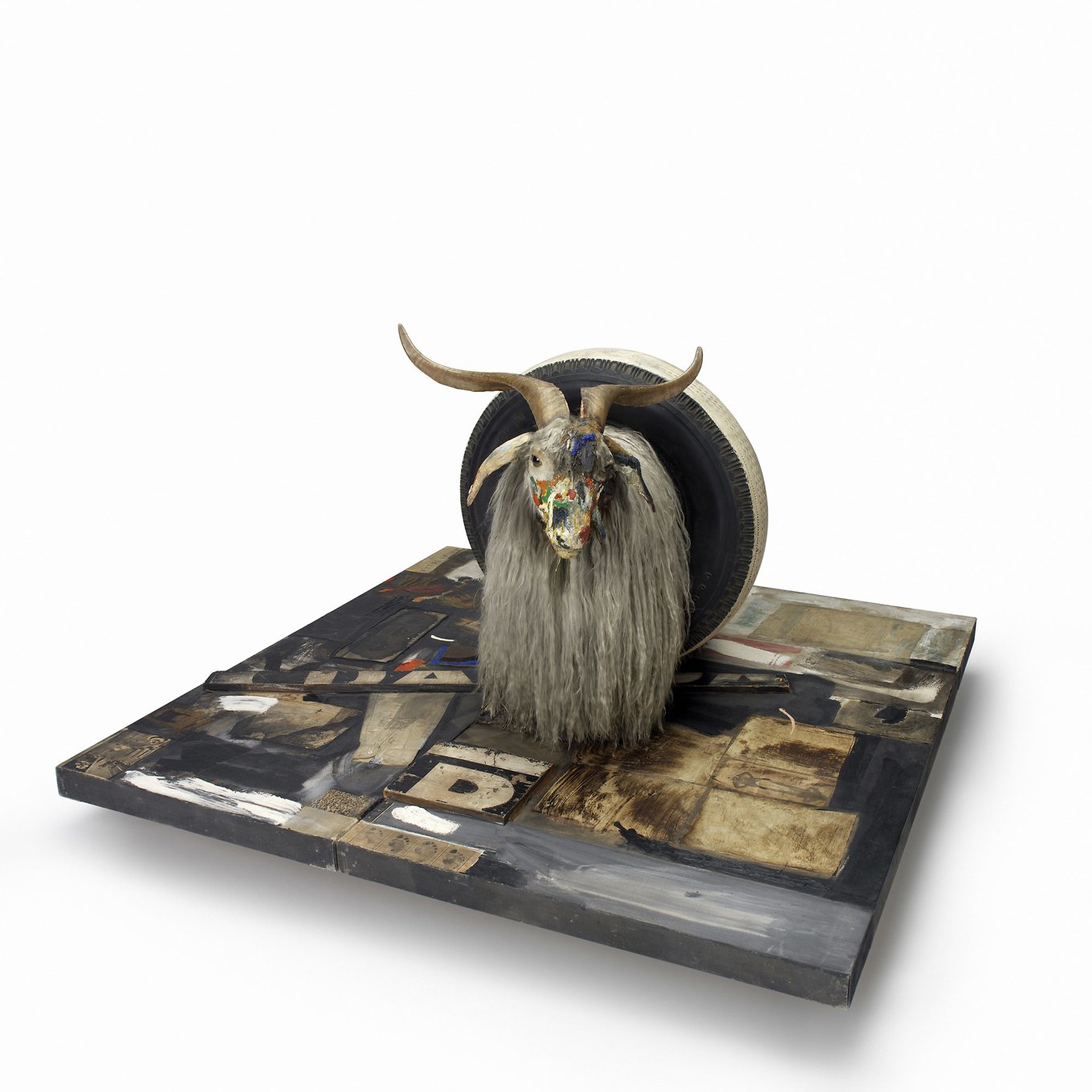
Monogram 1955-59 – Combine: oil, paper, fabric, printed reproductions, metal, wood, rubber shoe-heel, and tennis ball on two conjoined canvases with oil on taxidermied Angora goat with brass plaque and rubber tire on wood platform mounted on four casters. Moderna Museet, Stockholm. Purchase with contribution from Moderna Museets Vänner/The Friends of Moderna Museet. © Robert Rauschenberg Foundation, New York.
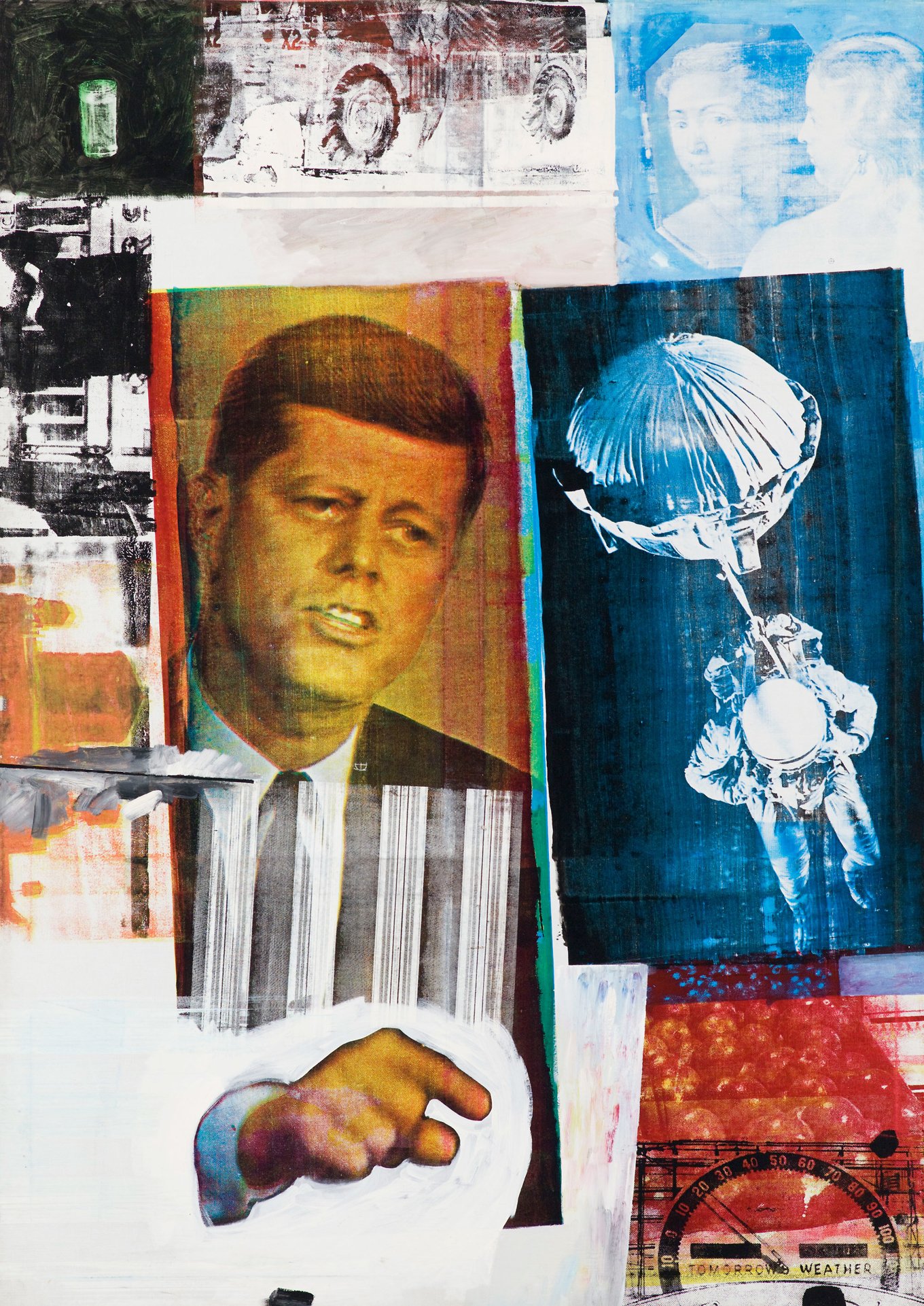
Retroactive II 1964 – Oil and silk-screen ink print on canvas 213.4 x 152.4 cm. Museum of Contemporary Art Chicago. Partial gift of Stefan T. Edlis and H. Gael Neeson © Robert Rauschenberg Foundation, New York. Photo: Nathan Keay © MCA Chicago
The rooms take visitors on a fascinating journey through the artist’s work, capturing the wide breadth of his range, from his early paintings to sculptures and down to his final artworks. It’s a rare opportunity for art lovers to immerse themselves into the mind and world of one of the most influential artists of the 20th century. The exhibition is open until 2 April 2017 and you can book your ticket on the museum’s site here. Tate Modern also offers a package that includes tickets to see both the Rauschenberg and the Wolfgang Tillmans exhibition, the latter running until June.
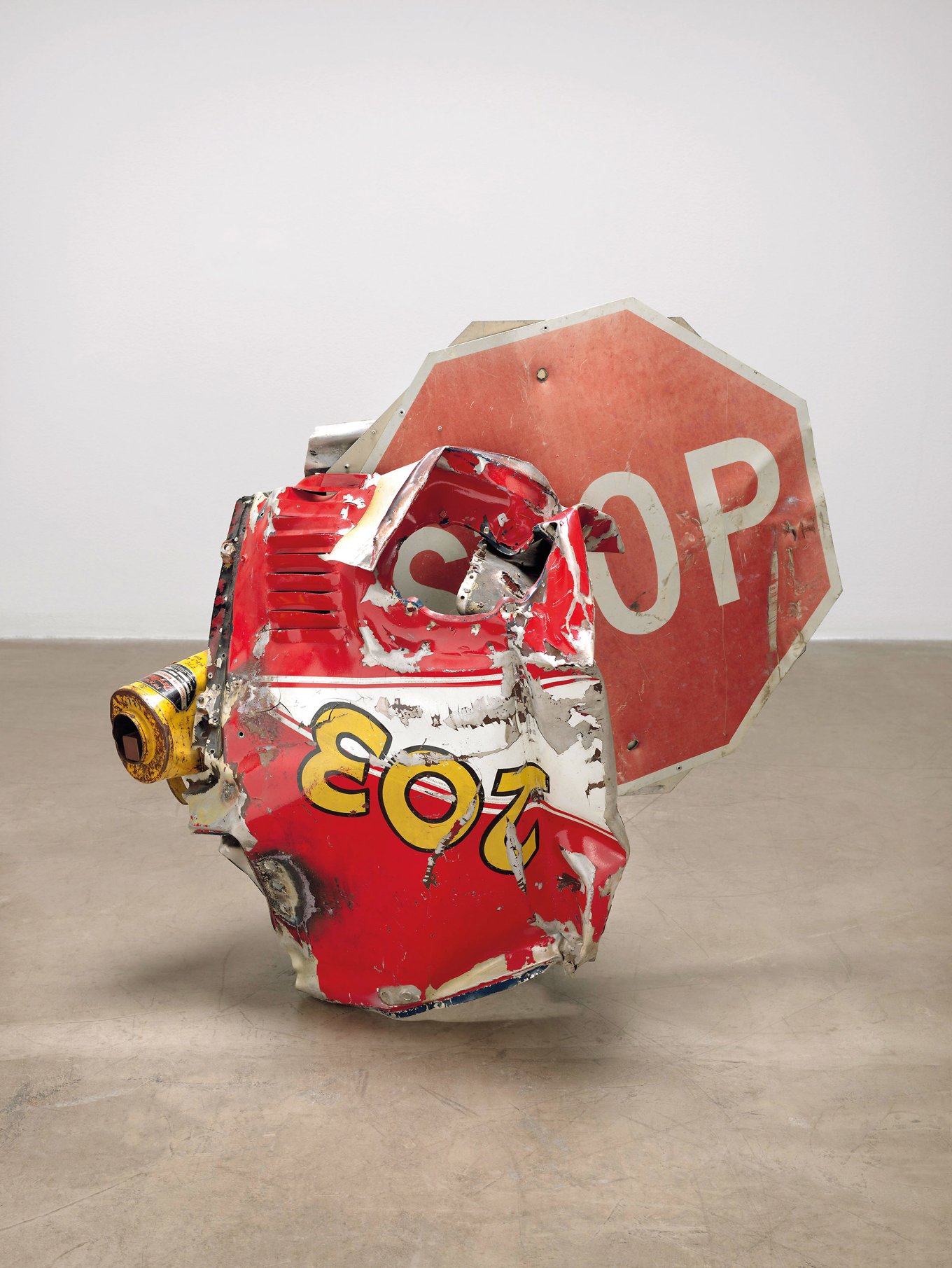
Stop Side Early Winter Glut, 1987 – Riveted metal road signs, car parts, and gas station signs 109.9 x 116.8 x 86.4 cm. The Museum of Modern Art, New York. Gift of Robert Rauschenberg Foundation and Marie-Josee and Henry R.Kravis. © Robert Rauschenberg Foundation, New York Photo: © 2016. The Museum of Modern Art, New York/Scala, Florence
After you visit the exhibition, don’t forget to stop by the Design Museum to see a range product, industrial and architectural designs, among many others. And if you’re spending at least a few days in London, you should make the most of your journey. Apart from the usual landmarks, you can also squeeze in a few one-of-a-kind places you won’t have the chance to enjoy anywhere else.
At Ziferblat, a cafe where you pay by the minute rather by the products you order, you’ll find tasty coffee, snacks and an unlimited supply of peanut butter on toast as well as books you can browse through and records to play. If you want to see porridge in a new light, step by the Porridge Cafe where you can buy both sweet and savory porridges with a gourmet twist. For those who love quirky places that celebrate the past, the Attendant Cafe, which we wrote about previously, is a must-visit place. The underground Victorian public toilet from the 1890s also has an ornate wrought iron gate marking its entrance, so you can’t miss it.
If you love food markets, you should definitely drop by Borough Market. It’s the oldest in London, dating back to the 13th century, and features an array of stalls filled with artisan cheeses and meat, fresh bread and fruits, as well as various gourmet snacks and sweet treats. As for hotels, there are many great choices, including The Hoxton, a boutique hotel that also has a location in Amsterdam or the Town Hall Hotel & Apartments, where industrial design meets Art Deco. You can also sleep in a ‘Cubi’ at the Qbic London hotel if you want to experience something different or stay in a cool, urban-chic room at The Ace, a hotel chain which originated in New York.
You probably already know that London offers many exciting things to do and see. But if you ever thought about visiting (or returning), now is the perfect time to explore the city, visit a fantastic exhibition at Tate Modern and celebrate both art and travel.





